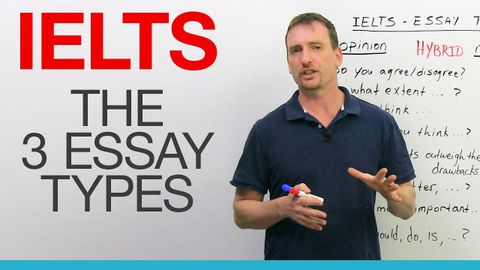雅思寫作。3種作文類型 (IELTS Writing: The 3 Essay Types)
Summer 發佈於 2021 年 02 月 02 日  沒有此條件下的單字
沒有此條件下的單字US /ɪˈsenʃəli/
・
UK /ɪˈsenʃəli/
- adv.本質上 ; 本來 ; 實質上;本質上;實際上
US /əˈprəʊtʃ/
・
UK /ə'prəʊtʃ/
- v.t./i.逼近;找...商量
- n. (c./u.)通道;入口;接洽;處理方式;方法
US /ˈɑbviəs/
・
UK /ˈɒbviəs/
- adj.明顯的;顯而易見的 ;顯而易見的;明目張膽的
US /ˈrek.əɡ.naɪz/
・
UK /ˈrek.əɡ.naɪz/
- v.t.認可;接受;賞識;承認;表彰;嘉獎;認出,認識
